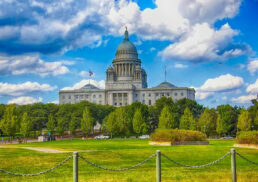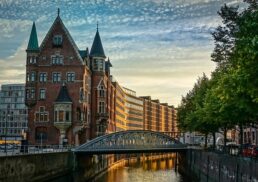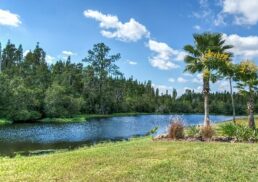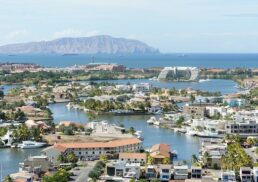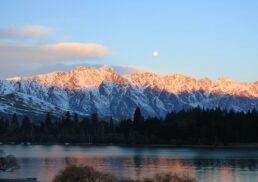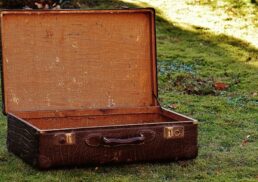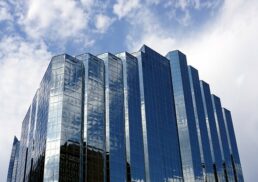Why visit Yellowknife, the capital of the Northwest Territory, Yellowknife? Known for its rich history and vibrant culture, Yellowknife offers a unique combination of natural wonders, historical sites, and thriving industries. Whether you’re interested in its gold rush past, diamond mines, or stunning Aurora Borealis displays, this article will guide you through the top attractions and experiences that make Northwest Territory Yellowknife a fascinating destination in northern Canada.
Table of Contents
Key Takeaways
Yellowknife’s historical development began with a gold rush in the 1930s, eventually evolving into a diverse economy supported by diamond mining, tourism, and other industries.
Key attractions in Yellowknife include the Northern Heritage Centre, Old Town, Great Slave Lake, and events such as aurora borealis viewing and the Midnight Sun Golf Tournament.
The community in Yellowknife is characterized by cultural diversity, numerous recreational activities, and a resilient lifestyle that adapts to extreme northern climate conditions.
Historical Background of Yellowknife
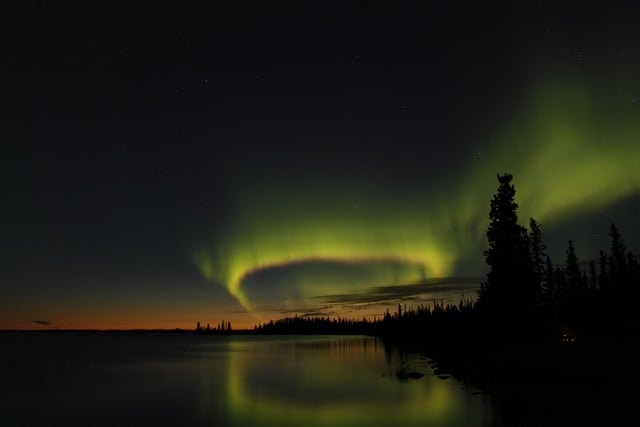
Yellowknife, named after the nearby Yellowknife River, owes its moniker to the copper tools made by the Indigenous Dene people encountered by European explorers in the 1700s. The city’s modern history began in the 1930s with a gold rush that transformed the area. In 1934, the first gold claims were staked on Yellowknife Bay, setting off a wave of settlement and construction.
By 1938, Yellowknife had transformed into a bustling boom town with three operational gold mines and hundreds of new settlers. This period of growth laid the foundation for the city’s infrastructure and community. Yellowknife’s transformation continued, and in 1953, it was officially established as a municipality. In 1967, it was designated the territorial capital of the Northwest Territories, solidifying its status as a central hub in northern Canada.
Today, Yellowknife has a population exceeding 20,000 and maintains a lively community spirit nearly 90 years after its founding. A significant proportion of Indigenous peoples contribute to Yellowknife’s rich cultural tapestry, making the city a mosaic of cultures. This diversity is reflected in the community’s vibrant cultural events and daily life, making Yellowknife a welcoming and inclusive city.
The historical journey of Yellowknife is a testament to its resilience and adaptability. From its early days as a gold rush town to its current status as a thriving capital, Yellowknife’s history is deeply intertwined with the broader narrative of Canadian history and the development of Canada’s North.
Major Industries in Yellowknife
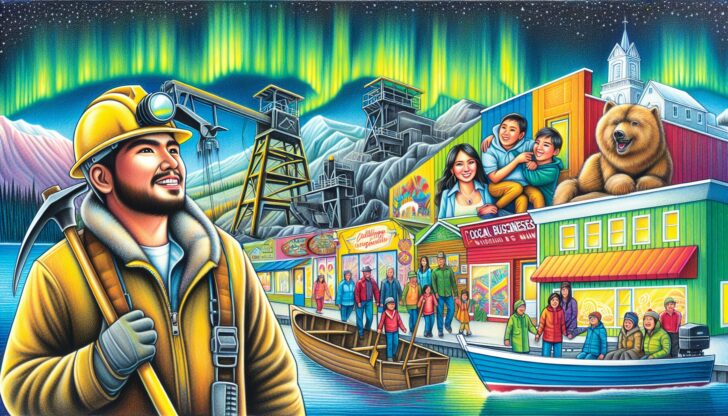
Yellowknife’s economy is supported by several significant yellowknife industries that have evolved over time. Initially driven by gold mining, the city’s economic landscape has diversified to include diamond mining, tourism, transportation, and communications.
These industries play a crucial role in sustaining the local economy and providing employment opportunities for residents.
Gold Mining Legacy
Gold mining has played a pivotal role in shaping Yellowknife’s historical and economic landscape. From the 1930s until 2004, gold mining was the cornerstone of Yellowknife’s development, attracting settlers and establishing the city’s infrastructure. The Giant Mine, which began operations in 1948, was particularly significant due to its vast gold deposits, contributing greatly to the region’s prosperity.
Although the era of gold mining ended in 2004, its legacy remains an integral part of Yellowknife’s identity. The transition from gold to diamond mining has helped stabilize the local economy, allowing Yellowknife to continue thriving despite the decline of its original industry.
Diamond Mines
The late 1990s discovery and development of diamond mines marked a new chapter for Yellowknife. These mines have significantly transformed the local economy, generating numerous jobs and revitalizing the city after the decline of gold mining. The establishment of diamond mines has brought economic stability and diversification, ensuring the city’s continued growth and prosperity.
The impact of diamond mining extends beyond economic benefits. It has also fostered technological advancements and environmental stewardship practices, positioning Yellowknife as a leader in the diamond mining industry.
Tourism and Outdoor Activities
Tourism is now a pillar of Yellowknife’s economy, driven by unique outdoor activities and natural attractions. Great Slave Lake offers abundant fishing opportunities, attracting anglers eager to catch species like lake trout and northern pike. The Yellowknife River is also popular for canoeing and kayaking, providing a picturesque setting for water sports enthusiasts.
Winter activities such as ice fishing and dog sledding add to Yellowknife’s tourism appeal, with iconic events like the Snow Castle drawing visitors from around the world. These activities not only enhance the tourism sector but also celebrate the city’s rich cultural heritage and natural beauty.
Key Landmarks and Attractions
Yellowknife is home to several key landmarks that reflect its unique heritage and natural beauty. These attractions, including museums, historic districts, and natural wonders, are integral to the city’s identity and offer visitors a glimpse into its rich history and vibrant culture.
Northern Heritage Centre
The Prince of Wales Northern Heritage Centre stands as a testament to the cultural history of the Northwest Territories. This museum showcases a wide array of artifacts and dioramas that narrate the stories and heritage of the region. It serves as an educational hub, attracting visitors who wish to learn about the history, art, and traditions of the Indigenous peoples and other communities in northern Canada.
Exhibits at the Northern Heritage Centre include traditional tools, clothing, and art that provide insights into the daily lives and cultural practices of the First Nations. These displays not only preserve the past but also educate future generations about the rich cultural tapestry of Canada’s North.
Old Town and Downtown Core
Old Town is a charming area characterized by historic log cabins and scenic waterfront views, offering a glimpse into Yellowknife’s early days. Visitors can explore the quaint streets and enjoy the unique architecture that reflects the city’s gold rush heritage. The contrast between Old Town and the downtown core highlights Yellowknife’s blend of historical charm and modern amenities.
Downtown Yellowknife, on the other hand, buzzes with contemporary shopping and dining options. Notable attractions such as the Centre Square Mall and City Hall are located here, making it a vibrant hub for both locals and tourists. This area exemplifies the city’s ability to maintain its historical roots while embracing modernity.
Great Slave Lake and Yellowknife River
Great Slave Lake and the Yellowknife River are two of Yellowknife’s most stunning natural features. These bodies of water provide unparalleled opportunities for outdoor activities and are prime locations for observing the northern lights due to their clear skies and geographical advantage. During summer, Yellowknife enjoys the sunniest weather in Canada, with over 1,000 hours of sunlight from June to August, making these areas ideal for recreation in the Canadian North.
The low light pollution in the region offers one of the best global opportunities for northern lights viewing. Fishing on Great Slave Lake or canoeing along the northern shore of the Yellowknife River, these natural wonders enhance the city’s allure and offer unforgettable experiences for nature lovers.
Unique Experiences in Yellowknife
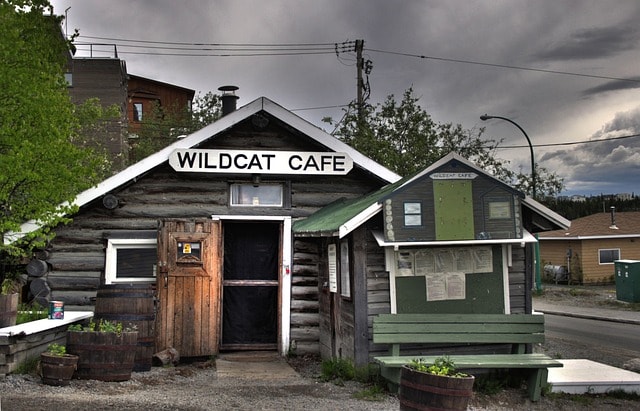
Yellowknife offers a plethora of unique experiences that set it apart as a destination. From viewing the spectacular aurora borealis to participating in the Midnight Sun Golf Tournament, the city provides a diverse range of activities that cater to all interests and showcase the best of northern Canada.
Aurora Borealis Viewing
One of the most sought-after experiences in Yellowknife is viewing the aurora borealis. Its location provides optimal conditions for witnessing this natural phenomenon, attracting tourists from around the world. Aurora Village, situated near Yellowknife, is renowned as one of the best places globally to observe the northern lights.
Visitors can experience the magic of the northern lights in a serene setting, often complemented by activities like ice fishing and dog sledding. This combination of natural beauty and cultural immersion makes aurora borealis viewing in Yellowknife an unforgettable adventure.
Midnight Sun Golf Tournament
The Midnight Sun Golf Tournament is another unique event that draws participants to Yellowknife. Held in mid-July, this tournament takes advantage of the extended daylight, allowing golfers to play under the continuous sun. This extraordinary phenomenon of the midnight sun provides a one-of-a-kind golfing experience that is both challenging and exhilarating.
Golfers enjoy the novelty of playing at the Yellowknife Golf Club while basking in the endless daylight. This event not only highlights the unique climatic conditions of northern Canada but also fosters a sense of community among golf enthusiasts.
Rocks Music Festival
The Rocks Music Festival, also known as Folk On The Rocks, is a key cultural event in Yellowknife. This festival showcases a diverse lineup of local and national musical acts, celebrating music amid the stunning northern landscape. Each year, the festival attracts a wide audience, making it a significant event for both residents and visitors.
Live music performances at the festival create a vibrant atmosphere, allowing attendees to enjoy a blend of cultural expressions and scenic beauty. The Rocks Music Festival is a testament to Yellowknife’s rich cultural scene and its ability to host events that resonate with a broad audience.
Learn more, checkout Folk on the Rocks swings back to Yellowknife.
Community and Lifestyle
Yellowknife’s community is characterized by its strong sense of togetherness and cultural diversity. The city hosts various events throughout the year that foster community spirit and recreational activities, enhancing the quality of life for its residents.
The blend of historical heritage, cultural richness, and modern amenities makes Yellowknife a unique and vibrant place to live.
Demographics and Population
As of the 2021 Census, Yellowknife’s population was recorded at 20,340, contributing significantly to the overall population of the Northern Territories, which is around 45,000. The city’s demographics include a range of ethnic backgrounds, with the majority being of European descent (55.8%), followed by Indigenous peoples (24.2%).
This diversity is reflected in the community’s cultural events and daily interactions, making Yellowknife a melting pot of cultures. The city has experienced population growth in recent years, driven by economic opportunities and the quality of life it offers.
Education and Services
Yellowknife provides essential services such as healthcare and education, ensuring a high standard of living for its residents. The city is home to several schools that offer education from primary to secondary levels, catering to the needs of its diverse population. These educational institutions play a crucial role in fostering a knowledgeable and skilled community.
Healthcare facilities in Yellowknife ensure that residents have access to medical care when needed. These services are vital in supporting the community’s health and well-being, contributing to the overall quality of life in the city.
Living in a Northern Climate
Living in Yellowknife means adapting to a northern climate characterized by extreme temperature variations. Winters can be particularly harsh, with average January temperatures around -26°C and lows reaching -40°C. Residents adapt their lifestyle to cope with these conditions, showcasing the community’s resilience and resourcefulness.
Despite the cold winters, Yellowknife offers various outdoor activities and community events that embrace the northern climate. Winter sports such as ice fishing and dog sledding are popular, and the natural beauty of the snowy landscape provides a tranquil setting for residents to enjoy.
Getting Around Yellowknife
Navigating Yellowknife is easy thanks to various transportation options and well-maintained outdoor spaces. Local transit services and the Yellowknife Airport provide convenient travel within and outside the city, and numerous lakes and walking trails enhance the natural experience of exploring Yellowknife.
Transportation Options
Yellowknife City Transit operates a reliable bus service that typically runs hourly with major stops including the Yellowknife Airport. This transit system ensures that residents and visitors can conveniently travel around the city. The cost of a bus fare is C$2.50 for adults, and children under 5 can ride for free, making it an affordable option for families.
For those who prefer driving, car rental services are available at the airport from companies like Budget, Hertz, and National; however, availability can be limited during peak summer months.
Taxi services are also readily available in Yellowknife, providing an alternative mode of transportation. Taxis are affordable, with a typical fare to the airport costing around C$15. These transportation options make getting around Yellowknife convenient and accessible for everyone.
Walking Trails and Outdoor Spaces
Yellowknife boasts a network of walking trails and outdoor spaces that cater to nature enthusiasts and those seeking to explore the city’s scenic beauty. Trails like the Frame Lake Trail and Niven Lake Trail offer picturesque views and opportunities for outdoor recreation. These trails are well-maintained and equipped with bridges and boardwalks, enhancing the outdoor experience for both residents and visitors.
The city’s numerous lakes, such as Great Slave Lake, provide ample opportunities for activities like fishing, kayaking, and canoeing. These outdoor spaces not only contribute to the recreational options available but also highlight the natural beauty that makes Yellowknife a unique destination.
The diverse terrain and scenic landscapes make Yellowknife an ideal location for those looking to connect with nature.
Summary
Yellowknife, with its rich history, vibrant industries, and unique experiences, offers a remarkable blend of cultural heritage and natural beauty. From its early days as a gold rush boom town to its current status as a thriving capital, the city’s journey is a testament to its resilience and adaptability. The transition from gold to diamond mining has played a crucial role in its economic stability, while tourism and outdoor activities continue to attract visitors from around the world.
Key landmarks such as the Prince of Wales Northern Heritage Centre, Old Town, and Great Slave Lake provide a deep dive into the city’s cultural and natural wonders. Unique experiences like viewing the aurora borealis, participating in the Midnight Sun Golf Tournament, and attending the Rocks Music Festival make Yellowknife a must-visit destination in northern Canada. Whether you’re exploring the walking trails, enjoying the local cuisine, or engaging with the community, Yellowknife promises an unforgettable adventure that celebrates the best of Canada’s North.
Frequently Asked Questions
What is the best time to visit Yellowknife for aurora borealis viewing?
For optimal aurora borealis viewing in Yellowknife, plan your visit from late August to mid-April, as this period provides the longest and darkest nights.
How does the Midnight Sun Golf Tournament work?
The Midnight Sun Golf Tournament operates in mid-July, utilizing the extended daylight to enable continuous play under the midnight sun. This unique format enhances the golfing experience, providing an unforgettable setting for participants.
What are some popular outdoor activities in Yellowknife?
In Yellowknife, popular outdoor activities encompass ice fishing, dog sledding, canoeing, kayaking, and traversing the various walking trails and lakes. These activities offer a unique way to engage with the stunning natural landscape of the area.
What transportation options are available in Yellowknife?
In Yellowknife, you can choose from a public bus service, car rentals, and affordable taxi services for your transportation needs.
What cultural attractions can be found in Yellowknife?
Yellowknife boasts key cultural attractions such as the Prince of Wales Northern Heritage Centre and Old Town, which highlight the city’s rich heritage. These sites offer an insightful glimpse into the local history and culture.
